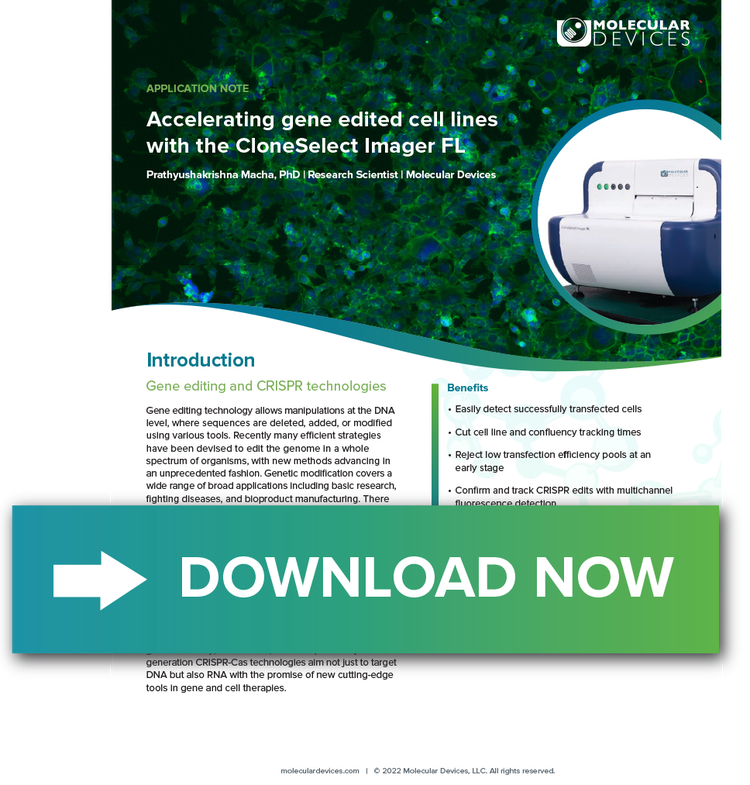
APPLICATION NOTE
Accelerating gene edited cell lines with the CloneSelect Imager FL

Learn about how CRISPR technologies can aid in easy detection of successfully transfected cells, cutting cell line and confluency tracking times, rejecting low transfection efficiency pools at an early stage, confirming and tracking various CRISPR edits with multi-channel fluorescence detection, and screening cells with accuracy and confidence while reducing the risk of over-passing disturbances with robotics redesign.
Gene editing technology allows the manipulations at the DNA level where it is deleted, added, or modified using various tools. Recently many efficient strategies have been devised to edit the genome in a whole spectrum of organisms, with new methods advancing in an unprecedented fashion. Major programmable nucleases available for genome editing are zinc finger nucleases (ZFN), meganucleases, transcription activator-like effector nucleases (TALEN), and the clustered regularly interspaced short palindromic repeats in short CRISPR/ CRISPR associated protein 9 (Cas9). Targeted gene editing uses these existing technologies, but CRISPR specifically has revolutionized science by demonstrating great efficiency, ease of use, and muliplexability1,2. Next-generation CRISPR- Cas technologies aim not just to target DNA but also RNA with the promise of new cutting-edge tools in gene and cell therapies.
Thank you for your interest.
If you requested contact, one of our team will be in touch shortly.